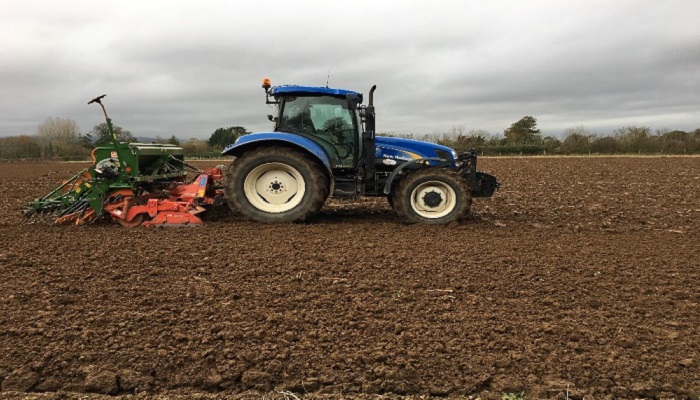24 November 2023
Check your seed rates

Michael Hennessy, Teagasc Head of Crops Knowledge Transfer, tells us that many farmers are taking the opportunity to plant more cereals in the coming days, following the welcome break in the weather. However, he explains that seed rates need close attention to allow for poorer conditions.
Farmers are describing conditions after ploughing as fair in good dry ground, with most of the areas coming up ok. Seed rates need close attention to allow for poorer conditions and also for losses due to pests (slugs, birds, etc.).
General seeding rates for mid-October sown crops is to establish around 260 plants/m2. This translates into a seed rate of 150-160kg/ha, where only 85% of sown seeds establish to plants.
This seeding rate needs to be increased substantially when planting in late November for the reasons outlined above, but also as emerged plants (in December or January) will not have the same tillering capacity as crops which are sown earlier. The table below gives an idea of the seed rates which are needed to give the best change of a good crop.
Table 1: Seed rates to establish 300 plants/m2
| Variety | TGW* | To establish 300 plants/m2 | |
|---|---|---|---|
| Establishment rate = 60% | Establishment rate = 70% | ||
| Kg/ha | |||
| JB Diego | 51 | 255 | 219 |
| Graham | 52 | 260 | 223 |
| Costello | 48 | 240 | 206 |
| KWS Dawsum | 49 | 245 | 210 |
| Spearhead | 52 | 260 | 223 |
| Torp | 51 | 255 | 219 |
| SY Insitor | 49 | 245 | 210 |
| Champion | 50 | 250 | 214 |
| *Note: Check TGW on the seed lot before calibrating the drill | |||
Winter oats are at similar risks to wheats. The seeding rate needs to reflect these risks and the table below give an idea of the seed rates necessary.
Table 2: Seed rates to establish 350 plants/m2 of winter oats
| Variety | TGW* | To establish 350 plants/m2 | |
|---|---|---|---|
| Establishment rate = 70% | Establishment rate = 75% | ||
| Kg/ha | |||
| WPB Isabel | 41 | 205 | 191 |
| Husky | 39 | 195 | 182 |
Weed control
Generally, emerged crops have had no weed control to date. It is too late for a pre-emerge herbicide, so there is a huge reliance on post-emergence herbicides. Assessing crop health is essential before applying herbicide, as most herbicides can be hard on crops – especially if the crop is under stress.
There are more herbicide options for winter wheat than either winter barley or winter oats. The main priority should be grass weed control, followed by broad-leaf weed control. A number of these options were discussed by Shay Phelan and Ciaran Collins in the latest edition of the Teagasc Tillage Edge. Listen to the Tillage Edge Podcast below:
